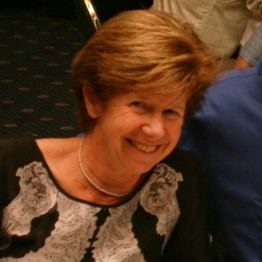Cellular Senescence: Aging, Cancer and Injury
A special issue of Cells (ISSN 2073-4409). This special issue belongs to the section "Cellular Aging".
Deadline for manuscript submissions: closed (30 September 2022) | Viewed by 1284
Special Issue Editors
Interests: cell biology; inflammation; molecular biology; endothelium; microRNA therapeutics; cellular senescence
Interests: endothelial cells; senescence; microRNA; vascular normalisation
Special Issues, Collections and Topics in MDPI journals
Special Issue Information
Dear Colleagues,
Cellular senescence is one of the nine, often inter-related, hallmarks of ageing and is a major underlying contributor to age-associated diseases.
Senescence is activated in response to stress and characterized by a permanent cell cycle arrest, an active metabolic state and production of a pro-inflammatory senescence associated secretory phenotype. Accumulation of senescent cells will compromise tissue architecture, the ability of tissue to regenerate or to function properly and can have paracrine and systemic effects to drive chronic inflammation. However, cellular senescence can have beneficial effects for example to inhibit cell proliferation and is an essential component of wound healing.
Considerable effort, both academic and biotech, has been generated in the last decade to understand the biochemical underpinnings of this process and to develop drugs to remove or modulate senescent cells in the hope that they will ameliorate age-related diseases. These include drugs that result in the elimination of the senescent cells (called senolytics) or those that modulate the secreted inflammatory nature of the senescent cell (called senomorphics). This indeed is one of the most exciting frontiers in medical research, but needs a fuller understanding of the interaction of senescence with the other hallmarks of the ageing process, of the temporal development of cellular senescence and ageing, and its influence on initiation and progress of disease.
The current Special Issue will focus on the newest developments of senescence with special emphasis on its impact in ageing, cancer and injury.
Prof. Dr. Mathew Vadas
Prof. Dr. Jennifer Gamble
Guest Editors
Manuscript Submission Information
Manuscripts should be submitted online at www.mdpi.com by registering and logging in to this website. Once you are registered, click here to go to the submission form. Manuscripts can be submitted until the deadline. All submissions that pass pre-check are peer-reviewed. Accepted papers will be published continuously in the journal (as soon as accepted) and will be listed together on the special issue website. Research articles, review articles as well as short communications are invited. For planned papers, a title and short abstract (about 100 words) can be sent to the Editorial Office for announcement on this website.
Submitted manuscripts should not have been published previously, nor be under consideration for publication elsewhere (except conference proceedings papers). All manuscripts are thoroughly refereed through a single-blind peer-review process. A guide for authors and other relevant information for submission of manuscripts is available on the Instructions for Authors page. Cells is an international peer-reviewed open access semimonthly journal published by MDPI.
Please visit the Instructions for Authors page before submitting a manuscript. The Article Processing Charge (APC) for publication in this open access journal is 2700 CHF (Swiss Francs). Submitted papers should be well formatted and use good English. Authors may use MDPI's English editing service prior to publication or during author revisions.
Keywords
- cellular senescence
- ageing
- inflammation
- therapeutics
Benefits of Publishing in a Special Issue
- Ease of navigation: Grouping papers by topic helps scholars navigate broad scope journals more efficiently.
- Greater discoverability: Special Issues support the reach and impact of scientific research. Articles in Special Issues are more discoverable and cited more frequently.
- Expansion of research network: Special Issues facilitate connections among authors, fostering scientific collaborations.
- External promotion: Articles in Special Issues are often promoted through the journal's social media, increasing their visibility.
- Reprint: MDPI Books provides the opportunity to republish successful Special Issues in book format, both online and in print.
Further information on MDPI's Special Issue policies can be found here.







